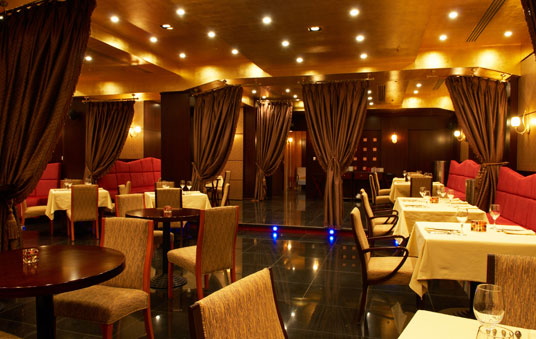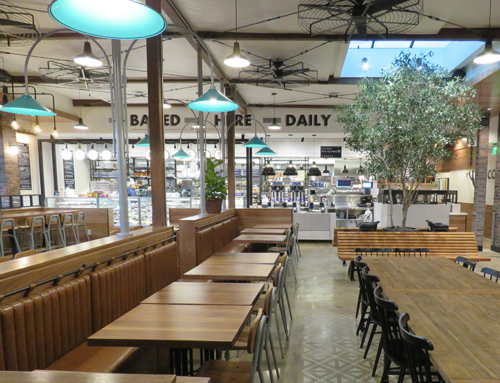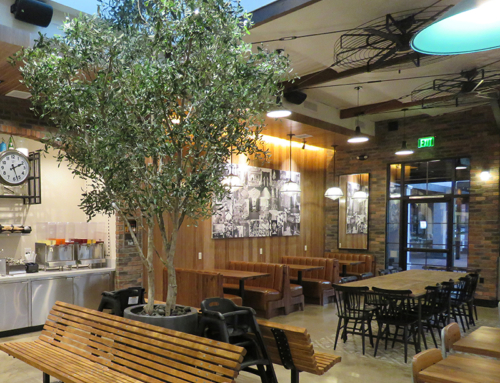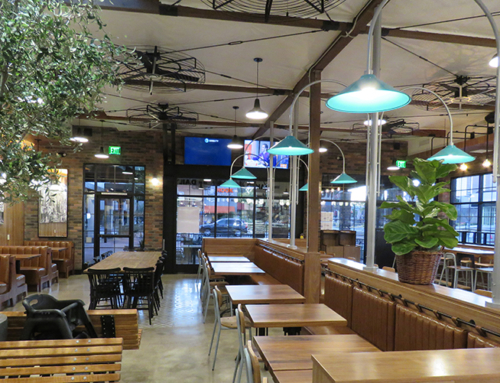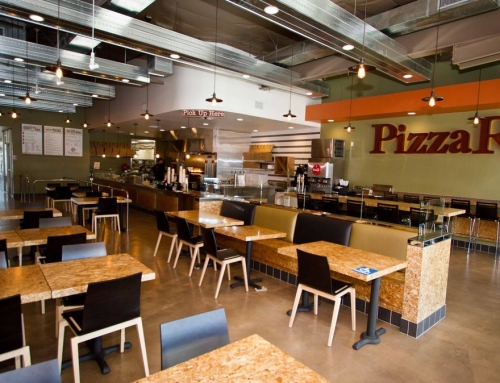Successful restaurants have two commonly overlooked restaurant design traits. These two factors are responsible for everything from mood and ambiance to traffic flow and food presentation. Still aren’t quite sure what we’re talking about? Read on…
A restaurant’s success is more than just great food and service. Restaurant design is an all-too-often overlooked ingredient in the recipe for a successful restaurant. We’re not talking about visuals alone. Sure, people might instantly recognize the Cheesecake Factory’s eye-catching visuals like its limestone flooring, hand painted murals, rich cherry wood, and decorative columns, but there are plenty of silent details that add to the customer experience.
Here are two critically overlooked restaurant design components of a successful restaurant.
Restaurant Layout
Let’s start with restaurant layout. While it’s tempting to cut corners, no shortcuts should be taken on a restaurant’s layout. The layout of a restaurant subtly contributes to one’s overall experience.
A roomy entrance area is important. This is the first and last impression your restaurant makes on someone. Not only should this area be welcoming and capture the essence of your restaurant, it should also be adequately sized to accommodate overflow crowds waiting for tables.
A well-located and well-stocked bar is always a welcome sight if there’s a wait for tables. This bar is a safe haven for anyone that can’t be immediately seated. It also must fit the restaurant’s concept.
A natural flow of traffic is important to both staff and customers making their way through the restaurant.
All of the above comes down to a solid restaurant design. You need a highly detailed restaurant floorplan and plenty of pre-construction planning to ensure the restaurant’s layout promotes efficiency – not headaches.
Restaurant Lighting
The lighting in a restaurant affects how we see our food, the restaurant’s ambiance, and the mood of the table. Have you ever noticed there’s a difference between the lighting and music played at a fast food restaurant vs. the lighting and music played at a more upscale restaurant?
The fluorescent lighting at a fast food restaurant combined with its color scheme and upbeat music creates an alert setting. A Cornell University study found that this attack on the senses may even cause people to feel hungrier, eat more food, and do it all quicker than they normally would.
The term fast isn’t applied to just the food preparation and service. It’s the experience as a whole, all the way to getting you out the door and the next person in. Therefore, even the lighting at a fast food restaurant serves its purpose.
The incandescent lighting at a more casual or upscale restaurant is dimmer and produces a warmer, softer, more gentile and relaxing vibe.
In this battle between bright and dim lighting is one general rule of thumb. If restaurant patrons cannot see the big juicy steak they’re cutting into or the intricacies of their finely prepared meal, your restaurant is too dark.
Lighting in a restaurant is incredibly important to food presentation. Finding a lighting balance is critical. Many restaurants in recent years have moved away from using direct light in the dining area in favor of indirect lighting. Direct light shining down onto a plate can cast an unappealing shadow on the meal. A restaurant naturally wants its food and drinks to tempt and entice, which means looks are important.
The Right Restaurant Lighting & Layout Goes A Long Way
By now, we’ve highlighted the importance of a restaurant’s lighting and layout. These design components are just part of a successful restaurant. On a great night, everything from the meal to the service and the establishment’s overall atmosphere/vibe just clicks for a memorable evening. Perhaps one worthy of a five star Yelp review and the viral power that carries.

